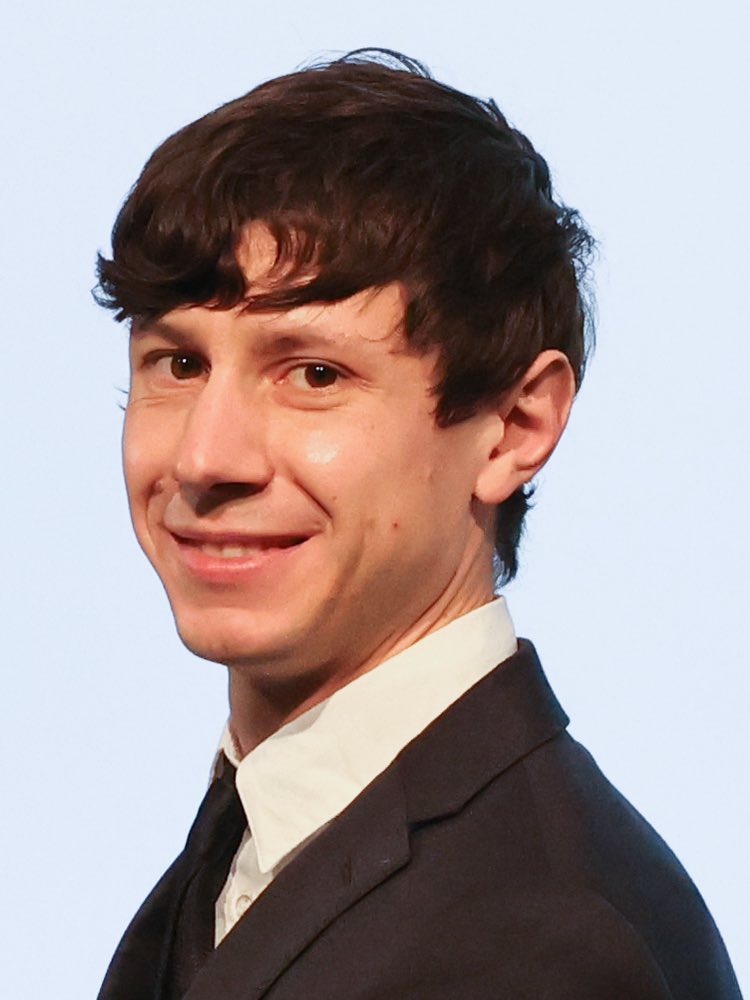Michele Simoncelli

Dr Michele Simoncelli
Fellow of Gonville and Caius College
Office: 511 Mott Bld
Email: ms2855 @ cam.ac.uk
TCM Group, Cavendish Laboratory
19 JJ Thomson Avenue,
Cambridge, CB3 0HE UK.
Research Group
- Dr Paramvir Ahlawat
- Alex Moorhouse
- Balazs Pota
- Kamil Iwanowski
- Ann Xu
- Andrew Smith
- Bogdan Rajkov

Research
I work on developing the theoretical and computational framework needed to understand and describe with quantitative accuracy quantum transport phenomena (involving e.g., charge, heat, spin) and their macroscopic signatures. The ambition is twofold: on the one hand, to innovate on current quantum-transport-based technologies for energy conversion or management (e.g., thermoelectric converters, solar cells, and heat shields), and on the other hand, to conceive and enable new applications. My technical interests cover statistical-mechanics approaches to describe transport of various quantum (quasi)particles and possible synergies, and techniques to coarse-grain atomistic (quantum) formulations into continuum models. I rely on - and develop when necessary - a variety of numerical methods, needed to parametrize and solve with quantitative accuracy transport problems ranging from the quantum to the continuum scale, as discussed below.
- Microscopic (quantum) formulations, based on the density matrix or Wigner phase-space frameworks, which are relevant from the fundamental-science viewpoint as they provide an atomistic quantum-accurate description of transport. I am relying on these microscopic formulations to describe transport at the quantum-mechanical level, with the ambition to systematically improve theoretical approximations and computer algorithms employed to solve quantum transport equations, used e.g. to predict from first principles the electrical and thermal conductivity of materials.
- Mesoscopic formulations, obtained from microscopic models by aptly integrating out some microscopic degrees of freedom (i.e. performing a ``coarse graining''). These have reduced complexity and accuracy compared to microscopic models, but are accurate enough for engineering applications. I have been working on the development of techniques to coarse-grain microscopic models into mesoscopic models, which aim at finding the best trade-off between accuracy and complexity.
- Simulation and theory-driven optimization of macroscopic devices, where transport (e.g. of charge or heat) takes place and plays a fundamental role in the way the device operates (see e.g. figure, which represents a molecular dynamics simulation of a supercapacitor used to extract energy from salinity differences [Simoncelli et al., Phys. Rev. X 8 021024, 2018]).

Featured Publications
- Thermal conductivity of glasses: first-principles theory and applications. npj Computational materials 9 106 (2023)
- Viscous heat backflow and temperature resonances in extreme thermal conductors. arXiv:2303.12777 (2023)
- Vibrational and thermal properties of amorphous alumina from first principles. arXiv:2303.08637 (2023)
- Wigner formulation of thermal transport in solids. Phys. Rev. X 12 041011 (2022)
- Generalization of Fourier's law into viscous heat equations. Phys. Rev. X 10 011019 (2020)
- Unified theory of thermal transport in crystals and glasses. Nature Physics 15 809 (2019)
- Blue energy and desalination with nanoporous carbon electrodes: Capacitance from molecular simulations to continuous models. Phys. Rev. X 8 021024 (2018)
- Many-body Green's function approach to lattice thermal transport. Phys. Rev. B 106 024312 (2022)
- Crossover from Boltzmann to Wigner thermal transport in thermoelectric skutterudites. Phys. Rev. Research in press (2023)